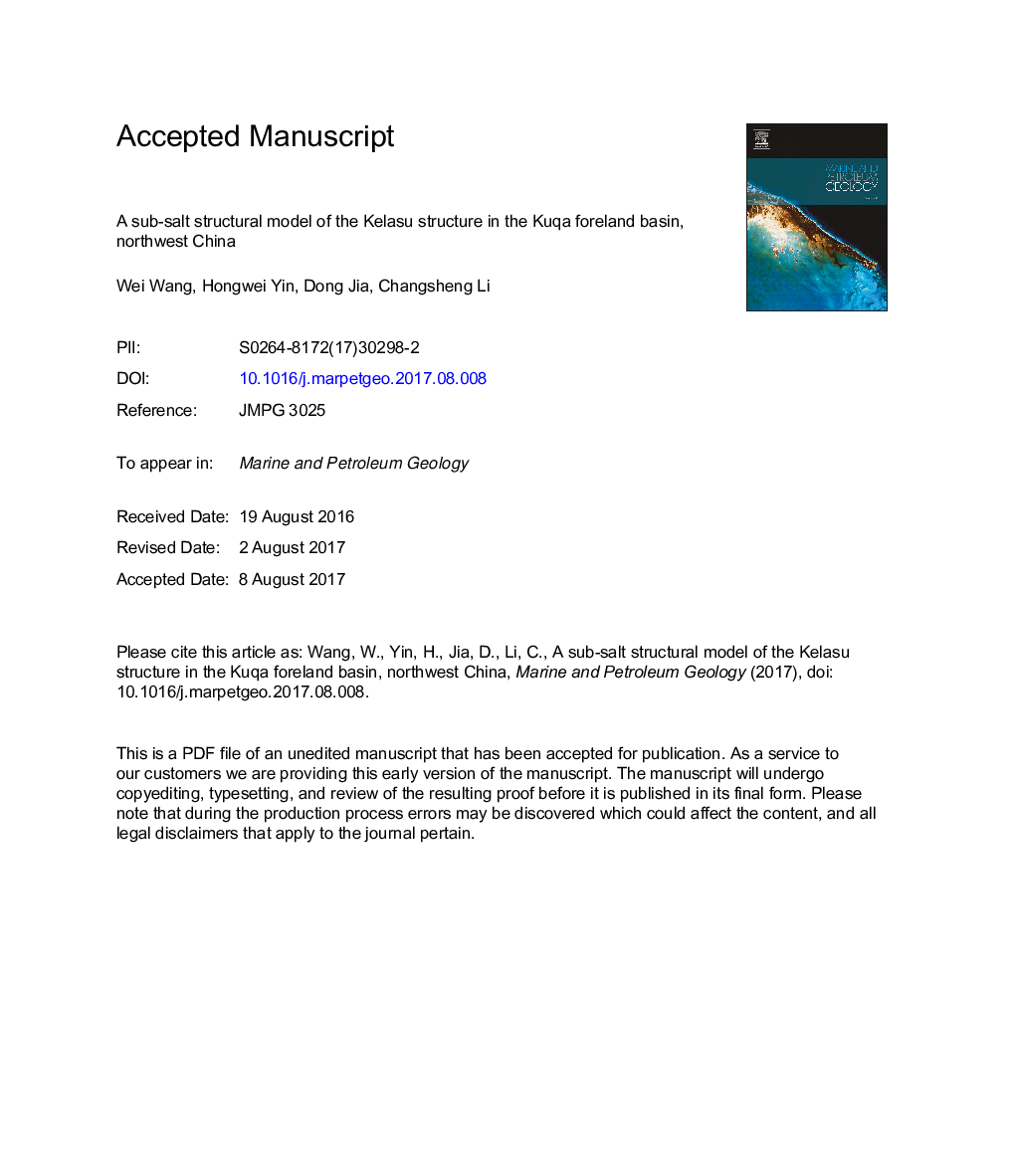| Article ID | Journal | Published Year | Pages | File Type |
|---|---|---|---|---|
| 5781915 | Marine and Petroleum Geology | 2017 | 27 Pages |
Abstract
The Kuqa foreland basin, adjacent to the South Tianshan Mountains, is a major hydrocarbon accumulation basin in Western China. The Kelasu structural belt is the focus for hydrocarbon exploration in the basin due to the presence of ramp-related anticline traps and a thick salt seal. The model of the Kelasu sub-salt structure is still contentious because of the structural complexity and poor seismic imaging below the salt layer. The area-depth-strain (ADS) method is applied to the southern part of the Kelasu Fault, a regional fault that cuts basement rocks. The ADS results are consistent with the seismic data, which indicate that both thin-skinned thrusting and basement-involved deformation occur within the Kelasu structure, with the Kelasu Fault acting as the boundary between the two regions of contrasting deformation. The ADS results also suggest that the depth of the lower detachment of the thin-skinned thrust belt is 9.5-10Â km, which may correspond to the base of the Triassic. The Kelasu structure has undergone approximately 8.15-10.76Â km of horizontal shortening in the east and 16.34Â km in the west of the structure.
Related Topics
Physical Sciences and Engineering
Earth and Planetary Sciences
Economic Geology
Authors
Wei Wang, Hongwei Yin, Dong Jia, Changsheng Li,
